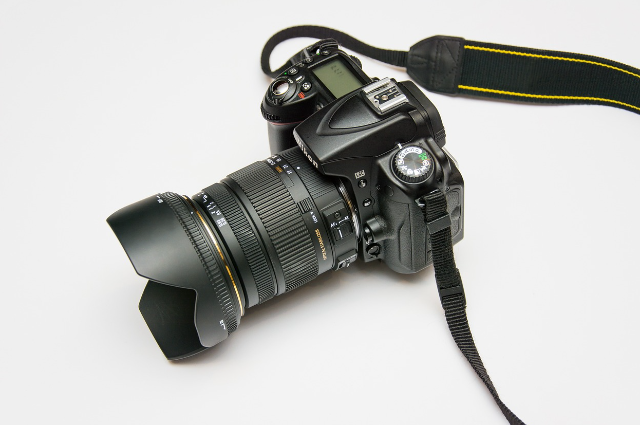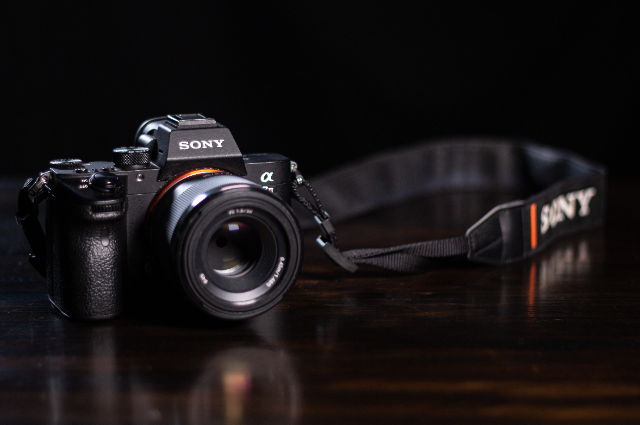
Image by Robert Karkowski from Pixabay
In the ever-evolving world of photographic technology, the discourse surrounding the choice between mirrorless and DSLR cameras stands as a testament to the nuanced considerations faced by discerning photographers. This essay endeavors to delineate the technical pragmatism inherent in each paradigm, eschewing superfluous embellishments for a focused examination of their respective merits and demerits.
The advent of mirrorless cameras has ushered in a paradigm shift, primarily epitomized by their compact and lightweight design. The conspicuous absence of a mirror and an optical viewfinder, hallmarks of DSLRs, endows mirrorless counterparts with a portability that accords convenience without compromising technological prowess. The electronic viewfinder (EVF), an integral facet of the mirrorless lineage, seamlessly integrates real-time exposure and depth-of-field previews, thereby fortifying the photographer's capacity for precision.
A salient merit of mirrorless cameras resides in their autofocus systems, characterized by a fusion of contrast-detection and phase-detection mechanisms. This amalgamation translates into swifter and more accurate autofocus, an attribute particularly pronounced in the realm of videography, where the demand for dynamic focus tracking is paramount. The video prowess of mirrorless cameras is further underscored by their propensity for 4K recording, elevated frame rates, and the assimilation of avant-garde features such as in-body image stabilization (IBIS) and silent shooting modes.
Concomitantly, however, mirrorless cameras are not impervious to certain drawbacks. Foremost among them is the perennial challenge of battery life, an exigency exacerbated by the constant operation of electronic viewfinders and LCD screens. Moreover, while the array of native lenses for mirrorless systems is expanding, it remains in a nascent stage when compared to the extensive repertoire available for DSLRs.
Conversely, the venerable DSLR, with its reliance on an optical viewfinder, presents a distinct visual experience cherished by traditionalists. The optical viewfinder, devoid of electronic intermediaries, affords a direct and unadulterated glimpse through the lens, resonating with photographers who venerate the authenticity of optical precision.
The lens ecosystem represents a pivotal domain in this comparative analysis. While mirrorless cameras are progressively expanding their repertoire of native lenses, DSLRs maintain a historical advantage in the sheer diversity and maturity of their lens offerings. This confluence of optical possibilities provides DSLR users with a panoramic range of choices, catering to a myriad of photographic scenarios. The legacy lens compatibility inherent in many DSLR systems further amplifies this versatility, affording photographers the latitude to integrate vintage and specialized optics into their creative arsenal.
Conversely, the nascent nature of mirrorless lens libraries does not diminish the innovation they bring to the forefront. The absence of a mirror box allows for more flexibility in designing lenses, leading to the creation of compact and high-performing optics.
Further reinforcing the allure of DSLRs is their robust build quality and weather-sealed fortitude. These attributes confer a palpable sense of durability, rendering DSLRs the instrument of choice for ventures into inhospitable terrains and capricious weather conditions. The sturdiness of DSLRs, coupled with an enduring battery life, positions them as stalwart companions for extended photographic expeditions.
Nevertheless, the resolute stance of DSLRs is not bereft of limitations. The bulkiness and weight attributable to the mirror and pentaprism components engender a physical heft that runs counter to the prevailing trend of streamlined design in the photographic domain. Additionally, the reliance on lens-based image stabilization, as opposed to the in-body stabilization found in many mirrorless counterparts, underscores a certain technological lag.
Another facet to consider in this comparative exploration lies in the domain of adaptability and technological evolution. The mirrorless realm, being the newer entrant to the photographic arena, is characterized by a propensity for swift technological iterations. Manufacturers of mirrorless cameras frequently release firmware updates that introduce novel features and enhancements, ensuring that users can stay at the forefront of technological innovation without the need for hardware upgrades. This adaptability aligns with the contemporary ethos of constant refinement and responsiveness to emerging trends.
Conversely, DSLRs, entrenched in a more established paradigm, grapple with the challenges posed by a slower pace of technological evolution. While these stalwart devices exhibit a robustness born of tradition, the slower integration of cutting-edge features and performance improvements may leave some users yearning for the agility seen in their mirrorless counterparts. The dichotomy between the rapid evolution of mirrorless technology and the enduring reliability of DSLRs thus prompts photographers to deliberate not just on current capabilities but also on the anticipated trajectory of their chosen system.
An intrinsic aspect of this deliberation centers around cost considerations. The burgeoning popularity of mirrorless cameras has led to a wider range of price points, making the technology more accessible to a broader audience. However, the mature market for DSLRs, coupled with potential discounts on older models, offers an alternative avenue for photographers seeking a reliable imaging tool without the financial commitment associated with the latest mirrorless innovations. The balance between budget constraints and the desire for cutting-edge features adds a pragmatic layer to the decision-making process.

Photo by Brent Ninaber on Unsplash
The discourse on mirrorless versus DSLR cameras would be incomplete without acknowledging the influence of professional preferences and industry trends. In terms of commercial photography, where reliability, speed, and image quality are paramount, both mirrorless and DSLR systems have found their niches. The choice often hinges on the specific demands of the project, the photographer's workflow, and the established conventions within the industry.
In conclusion, the choice between mirrorless and DSLR cameras is an exercise in discernment, necessitating a judicious consideration of individual proclivities and technical imperatives. The trajectory of technological advancement continues to blur the dichotomy between these photographic archetypes, prompting a perpetual reevaluation of their relative merits in the pursuit of visual artistry.
